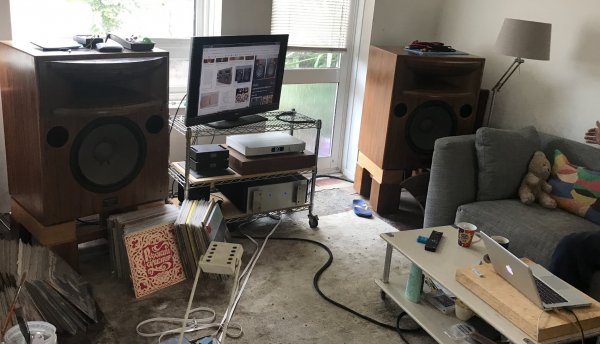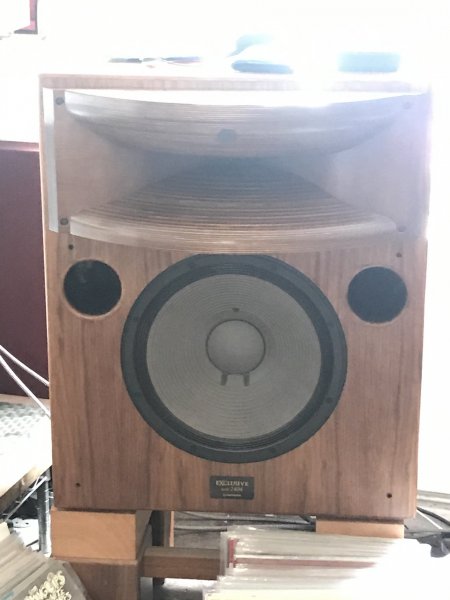Another reference I almost forgot about. Which basically shows the temperature rise may not be a bad as expected using program material some of us would actually listen too.
https://www.stereophile.com/content...r-voice-coil-temperatures-making-measurements
The methodology of that Stereophile test was imo flawed, in that it was not optimized for detecting the instantaneous voice coil heating which occurs when a high-wattage peak hits a voice coil.
They sampled the voice coil temperature at fixed intervals and tracked a moving average of the samples. They should have specifically sampled the temperature at the instant of the peaks and compared those instantaneous temperatures to the average. Sampling at a fixed interval allowed time for cooling and therefore did not catch thermal modulation effects, which can compress the peaks and thereby rob the music of dynamic contrast.
I am friends with a recording engineer who has been measuring and documenting thermal modulation (compression of peaks) in loudspeakers that come through his studio for decades. He has asked me not to give out specifics because he plans to write a paper on the subject. Briefly he finds a few decibels of compression on instantaneous peaks with speakers that have poor thermal modulation behavior, and in general he finds a correlation between high efficiency and freedom from thermal modulation, which is not surprising.
I had a conversation with Floyd Toole once about thermal modulation, the short-time-constant cousin of thermal compression. He said that thermal modulation is a real effect which he has often observed but it has not been adequately studied, and was unlikely to be adequately studied as the funding for that sort of thing would have to come from the prosound side, where currently there is insufficient interest.
I've also had conversations with Earl Geddes on the subject, and not surprisingly he also believes that thermal modulation is a limitation present in most home hifi speakers.
Anyway the significantly higher efficiency of horn systems, combined with the significantly bigger (i.e. higher thermal mass) voice coils of large drivers, implies that they will have correspondingly less thermal modulation at normal home-audio SPLs than moderate-efficiency conventional speakers.
Another possible contributor to the improved dynamics observed in horn systems is their narrower radiation pattern. The correspondingly weaker reverberant field results in a relatively lower in-room "noise floor" being present as new sounds emerge from the drivers. I'm not necessarily arguing for or against a well-energized reverberant field here; like most things in audio there are tradeoffs involved.
On the subject of radiation patterns and tradeoffs, note that there is a tradeoff relationship between on-axis SPL and pattern width. A narrow-pattern horn will have a higher sound pressure level on-axis, but it is not necessarily putting out more acoustic energy. By way of analogy, a variable-nozzle garden hose delivers higher on-axis
pressure when the pattern is narrow, but the same
amount of water comes out whether the pattern is wide or narrow.

















 fullsizeoutput_7de
fullsizeoutput_7de Screenshot 2019-09-11 at 09.42.48
Screenshot 2019-09-11 at 09.42.48